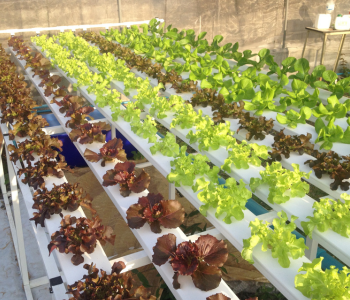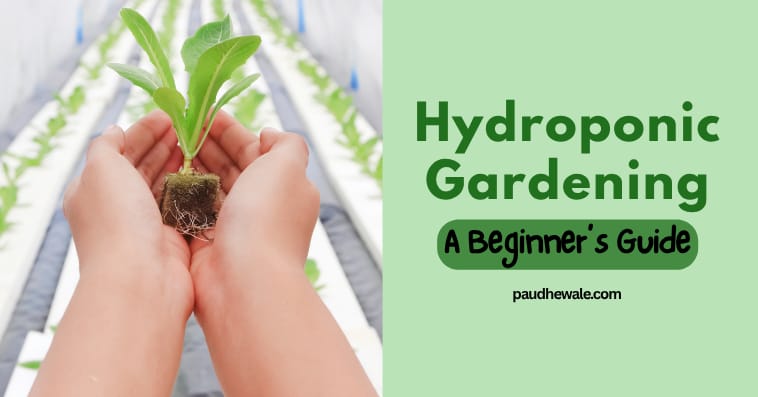In an age where fresh, chemical-free food and space-saving gardening methods are gaining popularity, hydroponic gardening has emerged as a revolutionary technique. Whether you’re a gardening enthusiast with limited space or a beginner looking for efficient ways to grow your own vegetables, this soil-free cultivation method can completely transform your approach to gardening.
In this comprehensive guide, we’ll walk you through the basics of hydroponics, its benefits, types, setup essentials, ideal plants, and tips to start your own home hydroponic garden — even if you’ve never touched a seed before.
What is Hydroponic Gardening?
Hydroponic gardening is a method of growing plants without soil, using a nutrient-rich water solution to deliver essential minerals directly to plant roots. Instead of drawing nutrients from the ground, plants are suspended in inert mediums such as coco peat, perlite, vermiculite, clay pebbles, or simply water.
This method not only saves water and space but also allows plants to grow up to 50% faster than traditional soil-based gardening. It’s ideal for both urban apartment dwellers and seasoned gardeners who want a more controlled, sustainable growing environment.

Why Choose Hydroponics? Top Benefits
1. Water Conservation
Hydroponics uses up to 90% less water than traditional soil gardening. The water circulates in a closed-loop system, which reduces wastage and makes it ideal for water-scarce regions.
2. Faster Growth and Higher Yields
Plants receive nutrients directly, leading to accelerated growth and more produce in less time. This makes it a cost-effective solution in the long run.
3. No Weeding or Pests
Say goodbye to weeding and soil-borne pests. Since there’s no soil, the chances of disease, fungi, and insects are significantly reduced.
4. Year-Round Gardening
With the right lighting and setup, you can grow vegetables and herbs all year round, regardless of weather conditions.
5. Space-Saving Design
Vertical hydroponic systems or stackable containers let you grow a large number of plants in compact spaces—perfect for balconies, rooftops, or indoor gardens.
Types of Hydroponic Systems
There are various hydroponic setups available, depending on your budget, space, and plant needs. Here are the most common ones for beginners:
✅ 1. Deep Water Culture (DWC)
Plants are suspended over a nutrient-rich oxygenated water solution. Ideal for leafy greens like spinach, lettuce, and kale.
✅ 2. Nutrient Film Technique (NFT)
A shallow stream of water containing nutrients flows continuously over the roots. This system is great for small root plants like herbs.
✅ 3. Wick System
A passive system where a wick draws nutrients to the roots from a reservoir. Best for low-maintenance indoor setups.
✅ 4. Ebb and Flow (Flood and Drain)
The grow tray floods with nutrient solution and then drains back into the reservoir. Perfect for a wide variety of vegetables.
✅ 5. Aeroponics
Roots hang in the air and are misted with nutrients. This high-tech method provides rapid growth but requires more precision and monitoring.
How to Set Up a Basic Hydroponic Garden
Starting your own DIY hydroponic garden may seem overwhelming at first, but it's simpler than it looks. Here's a step-by-step breakdown for beginners:
✅ Step 1: Choose a System
If you’re just starting, go with a Deep Water Culture or Wick System. They’re affordable, easy to set up, and require less maintenance.
✅ Step 2: Select a Growing Medium
Use mediums like coco coir, hydroton, perlite, or rock wool. These materials provide support and aeration to the plant roots.
✅ Step 3: Prepare the Nutrient Solution
Buy a hydroponic nutrient mix designed for vegetables and herbs. Mix it in water following the instructions. Maintain the pH level between 5.5 to 6.5 for optimal absorption.
✅ Step 4: Provide Adequate Lighting
If you're growing indoors, invest in LED grow lights or fluorescent lamps to mimic sunlight for at least 12-16 hours a day.
✅ Step 5: Choose the Right Plants
Start with easy-to-grow hydroponic plants like:
-
Lettuce
-
Basil
-
Spinach
-
Mint
-
Tomatoes
-
Strawberries
✅ Step 6: Monitor and Maintain
Check the water level, pH, and nutrient concentration regularly. Clean the system every few weeks to prevent algae or bacteria buildup.
Best Plants for Hydroponic Gardening
While almost any plant can be grown hydroponically, some are especially suited for beginners:
| Plant | Growth Time | Ideal System |
| Lettuce | 30 days | Deep Water Culture |
| Basil | 28-35 days | NFT or DWC |
| Spinach | 30-40 days | Wick System |
| Cherry Tomatoes | 60-85 days | Ebb & Flow or NFT |
| Strawberries | 90+ days | NFT or Aeroponics |
These plants not only grow well hydroponically but also yield high returns with proper care.
Pro Tips for Hydroponic Success
-
Don’t overcrowd your setup. Each plant needs space to grow.
-
Use filtered or RO water to avoid mineral deposits.
-
Avoid placing your system in direct harsh sunlight; opt for filtered natural light or controlled LED setups.
-
Regularly flush the system to avoid salt buildup.
-
Learn to identify signs of nutrient deficiency like yellowing leaves or stunted growth.
Is Hydroponic Gardening Worth It?
Absolutely. Though the initial investment may seem high compared to traditional soil-based gardening, hydroponics offers better returns in yield, saves space, conserves water, and lets you enjoy pesticide-free fresh greens every day. It's perfect for urban gardeners, sustainability enthusiasts, and even small-scale commercial growers.
Where to Buy Hydroponic Kits in India?
If you're wondering where to get affordable hydroponic kits, nutrients, grow mediums, seeds, and lighting systems, look no further than PaudheWale.
✅ Why PaudheWale?
-
Trusted supplier for quality gardening products
-
Affordable hydroponic starter kits for beginners
-
Expert customer support for setup and maintenance
-
Fast delivery across India
🌿 Begin your soil-free gardening journey with ease. Buy your hydroponic gardening kit today from PaudheWale and take the first step toward growing fresh greens at home—no backyard needed!
